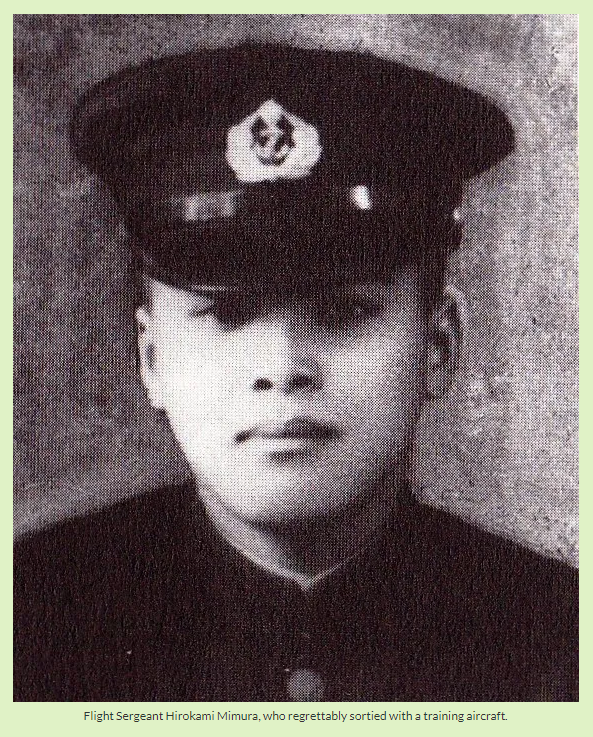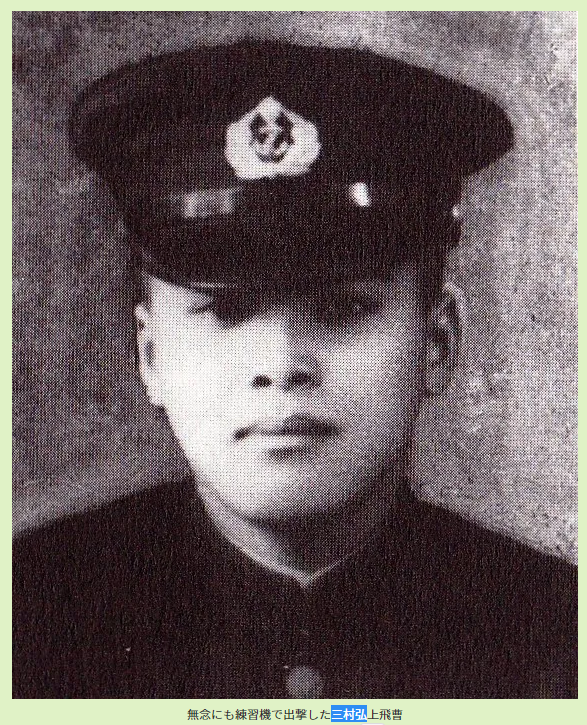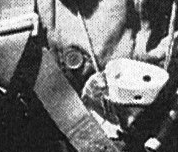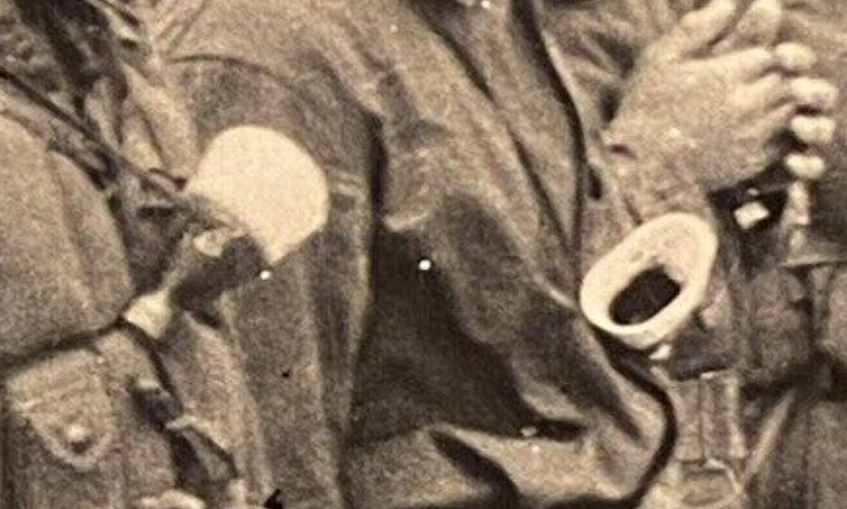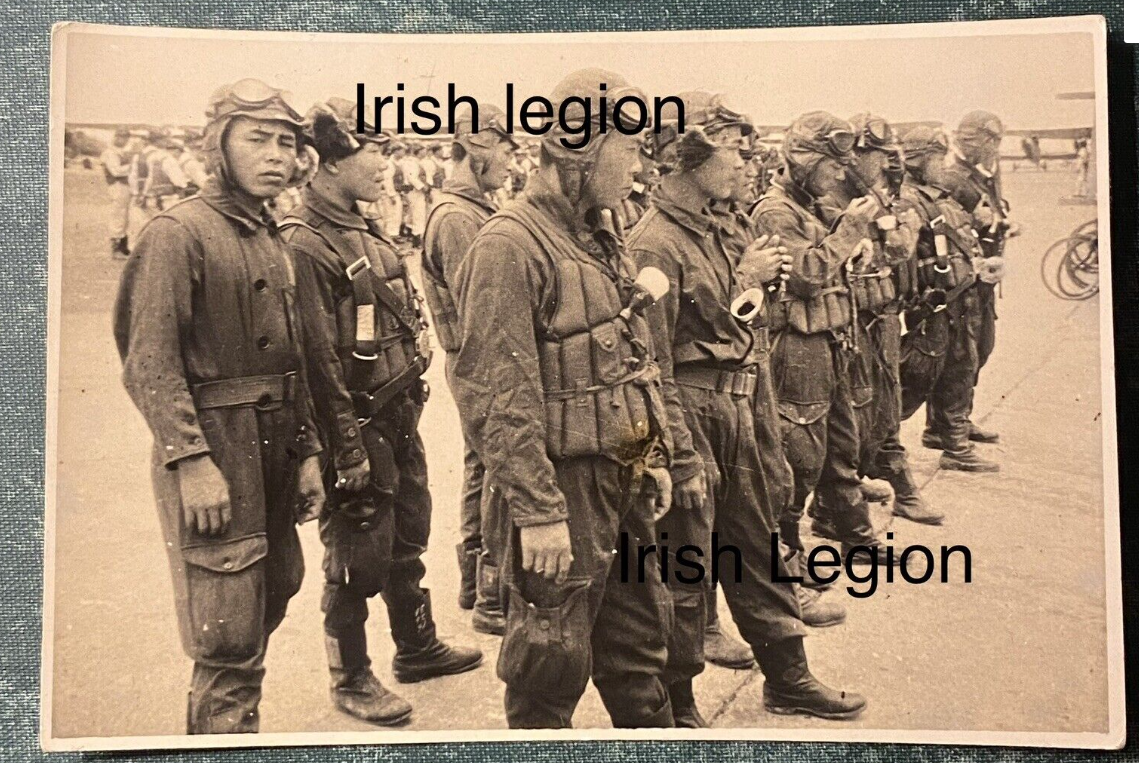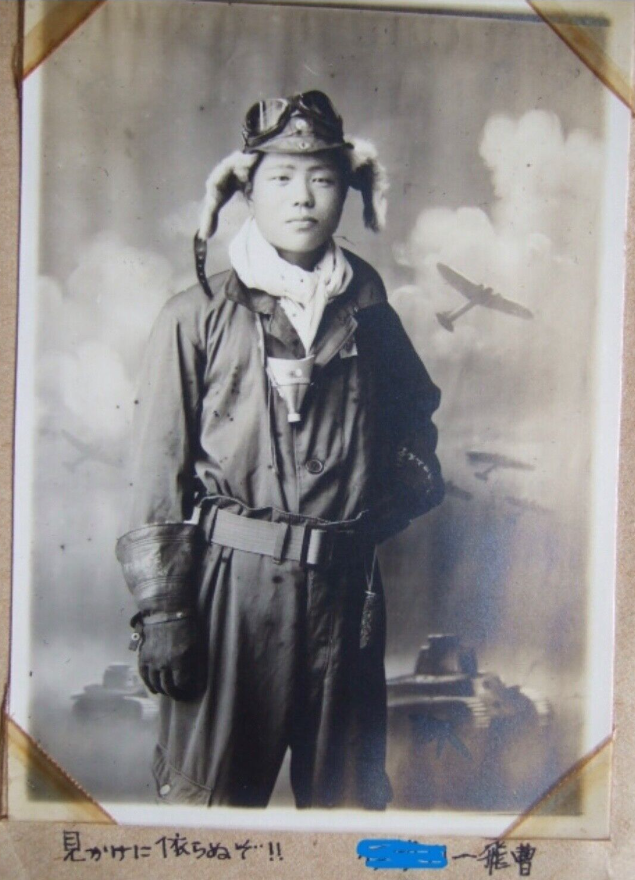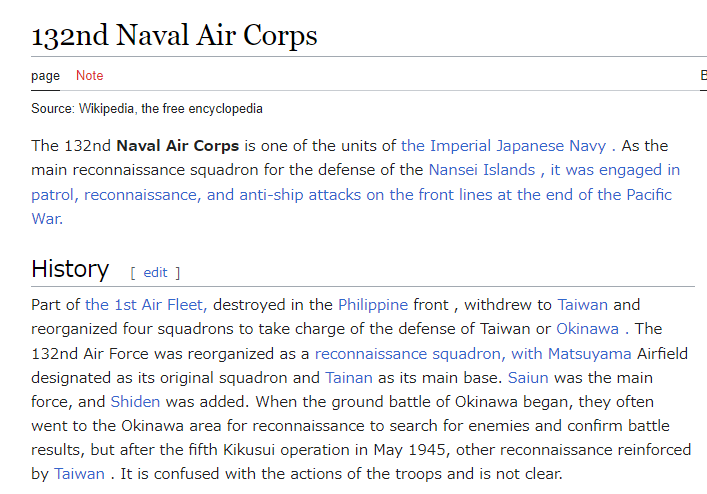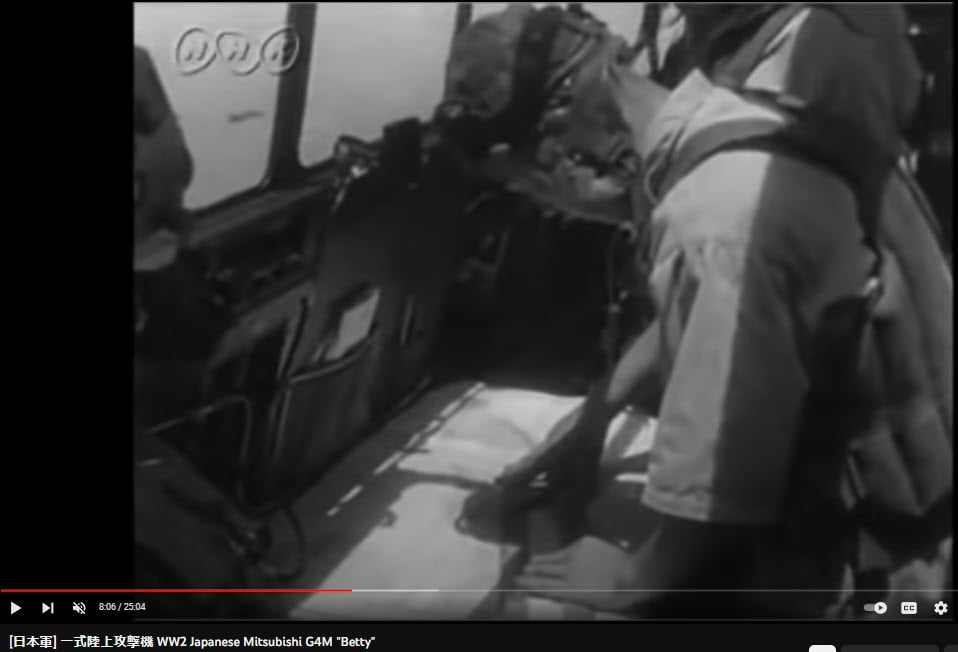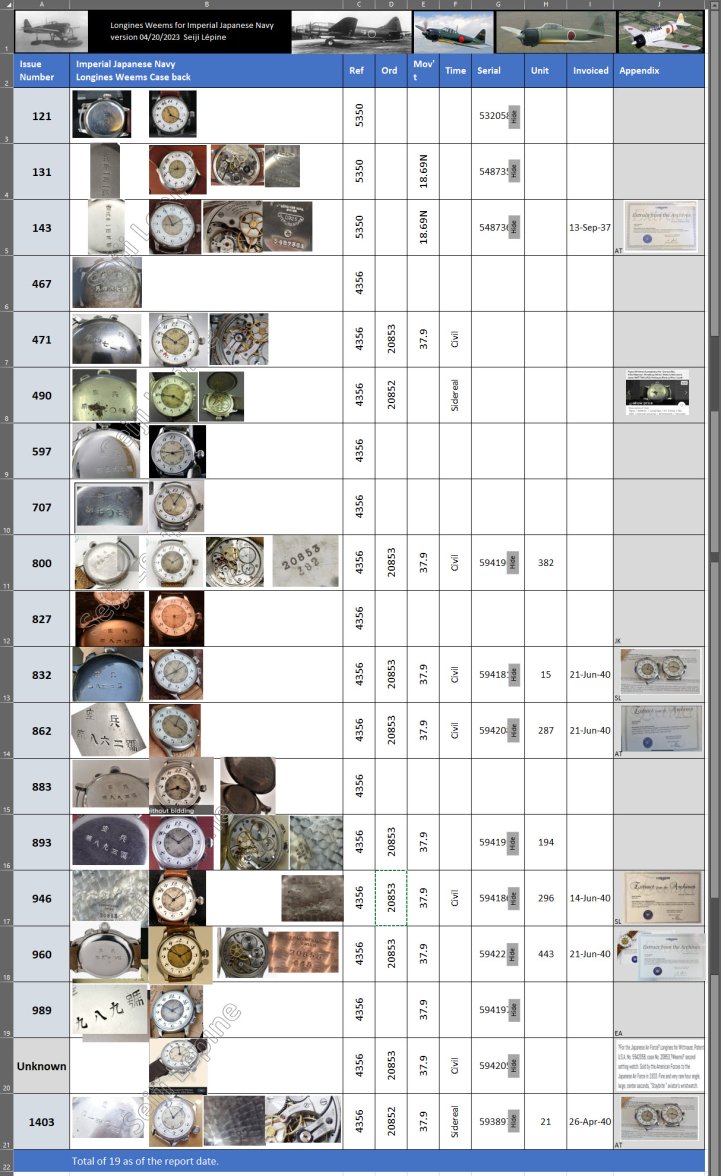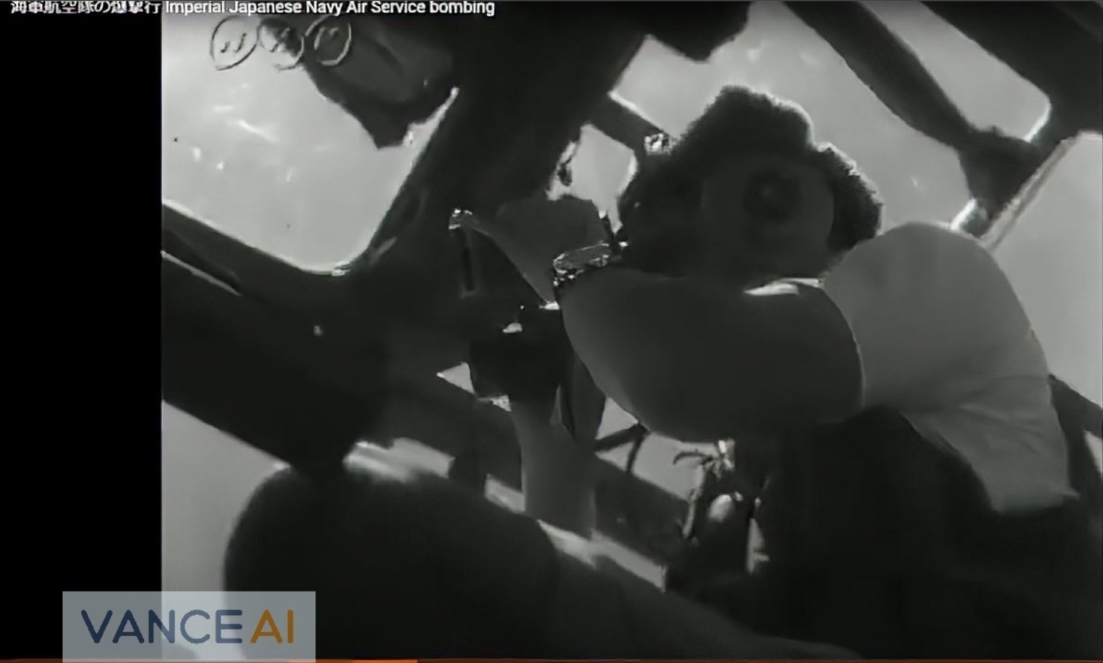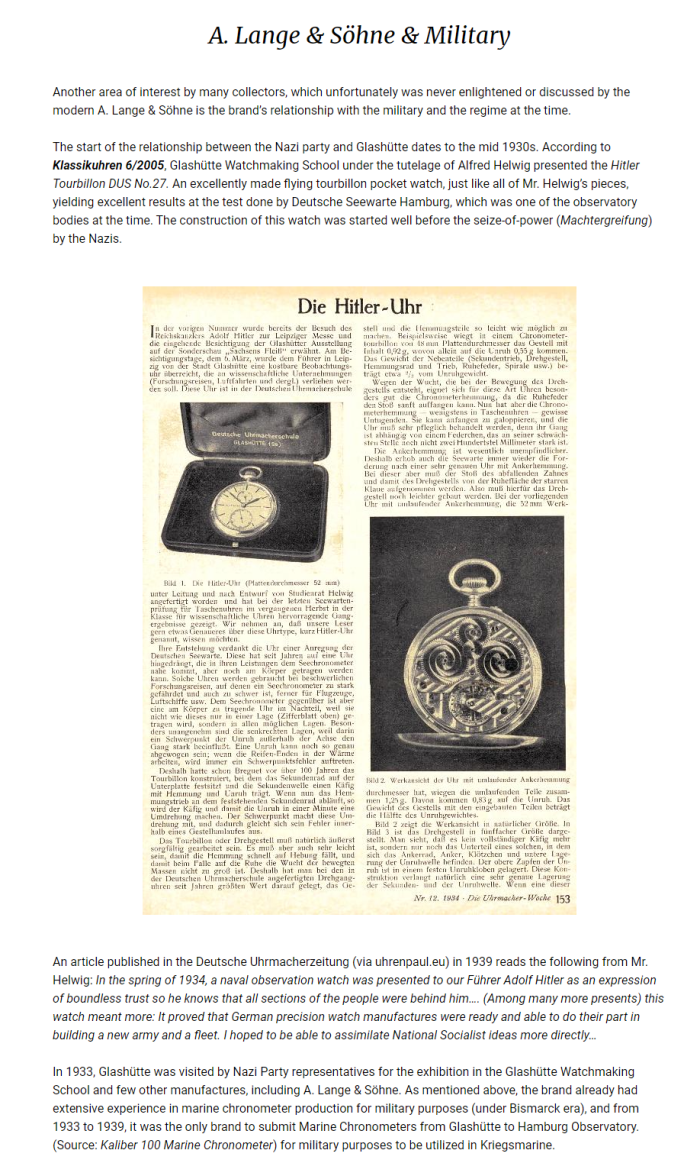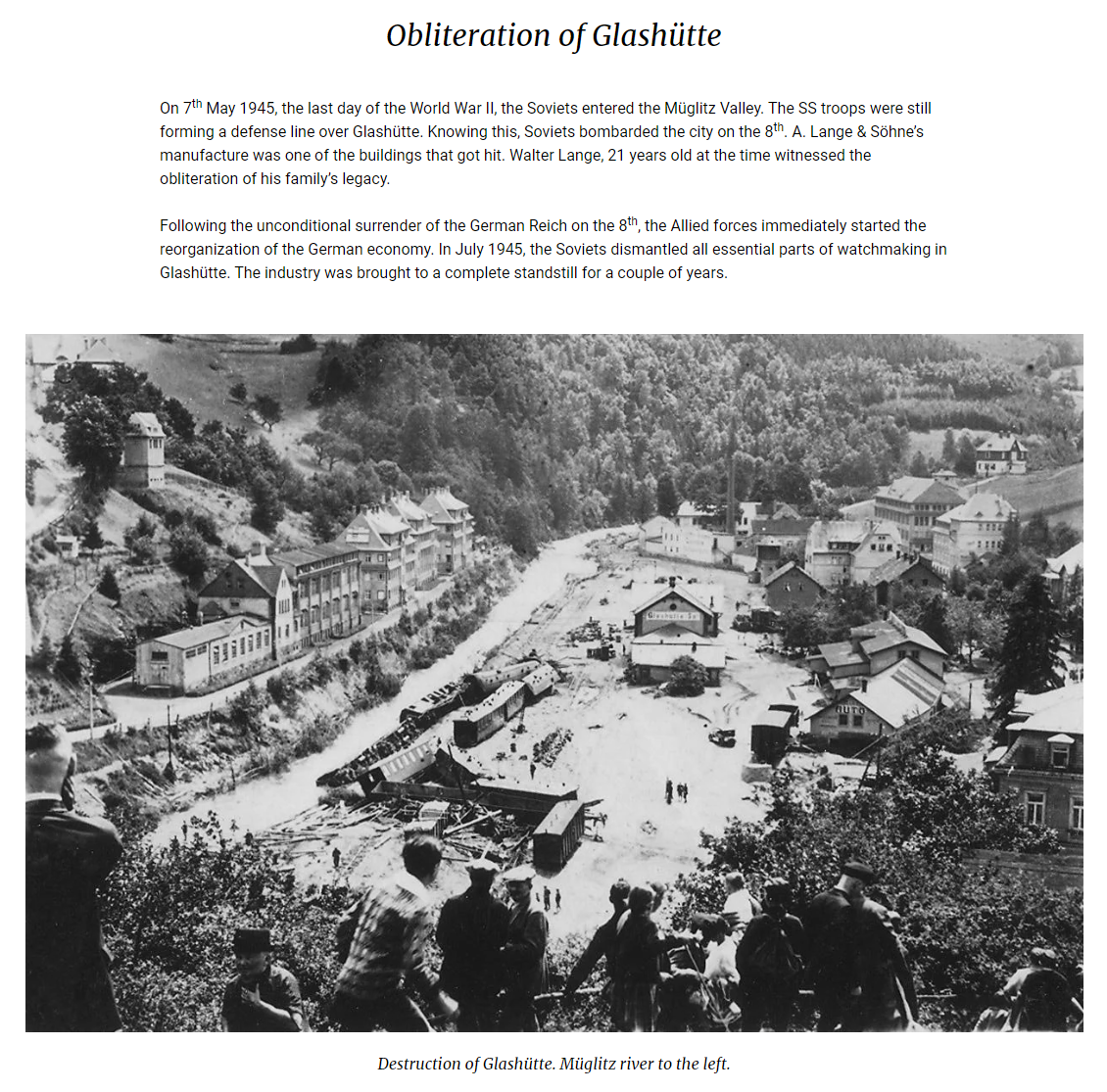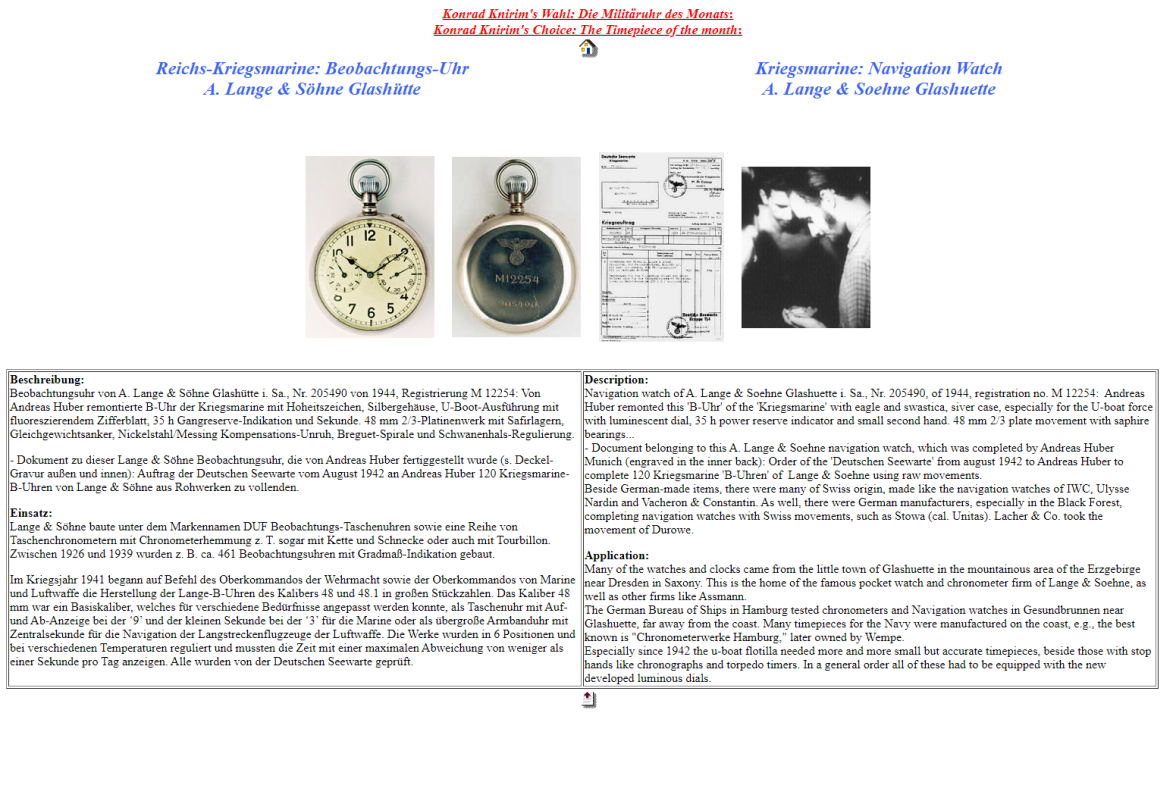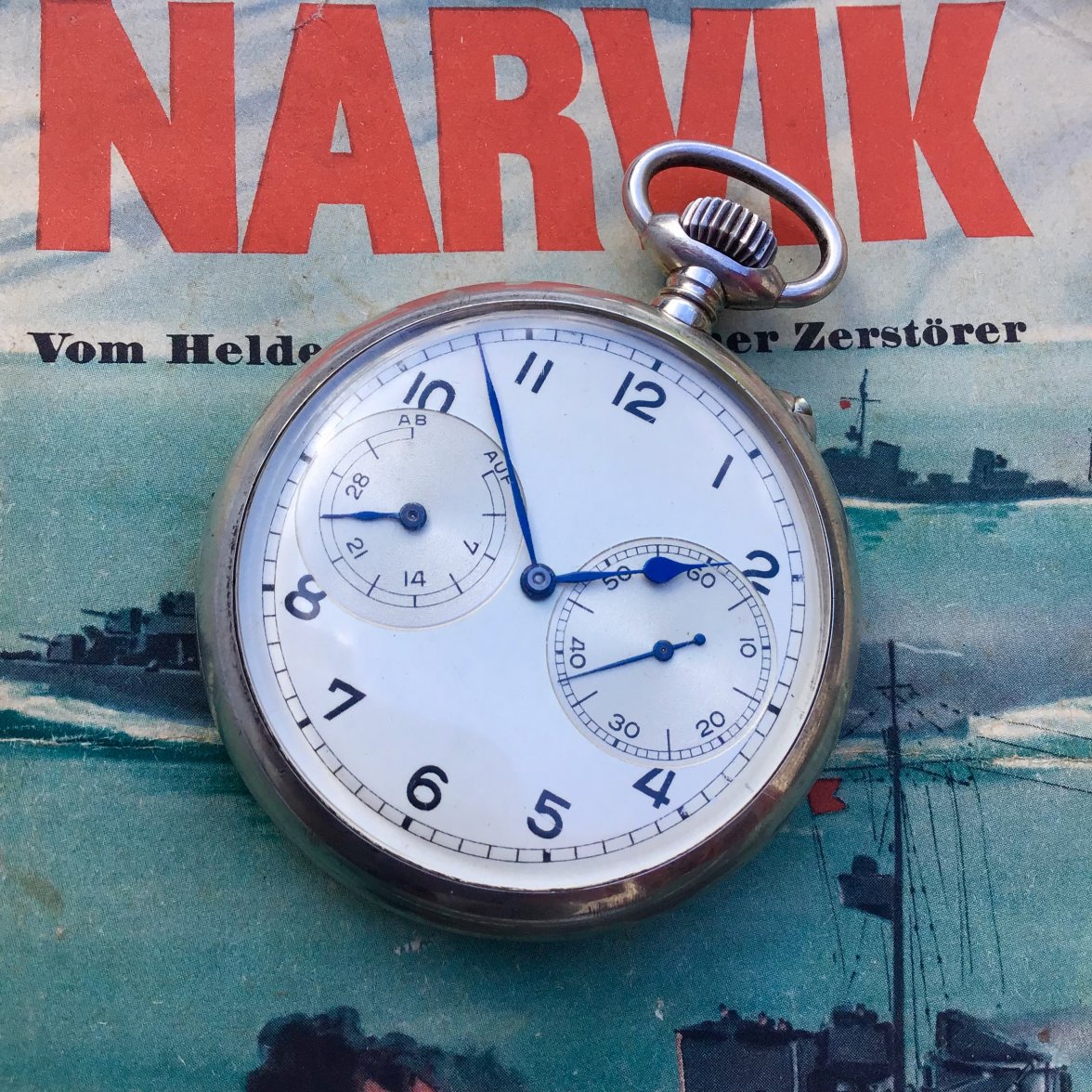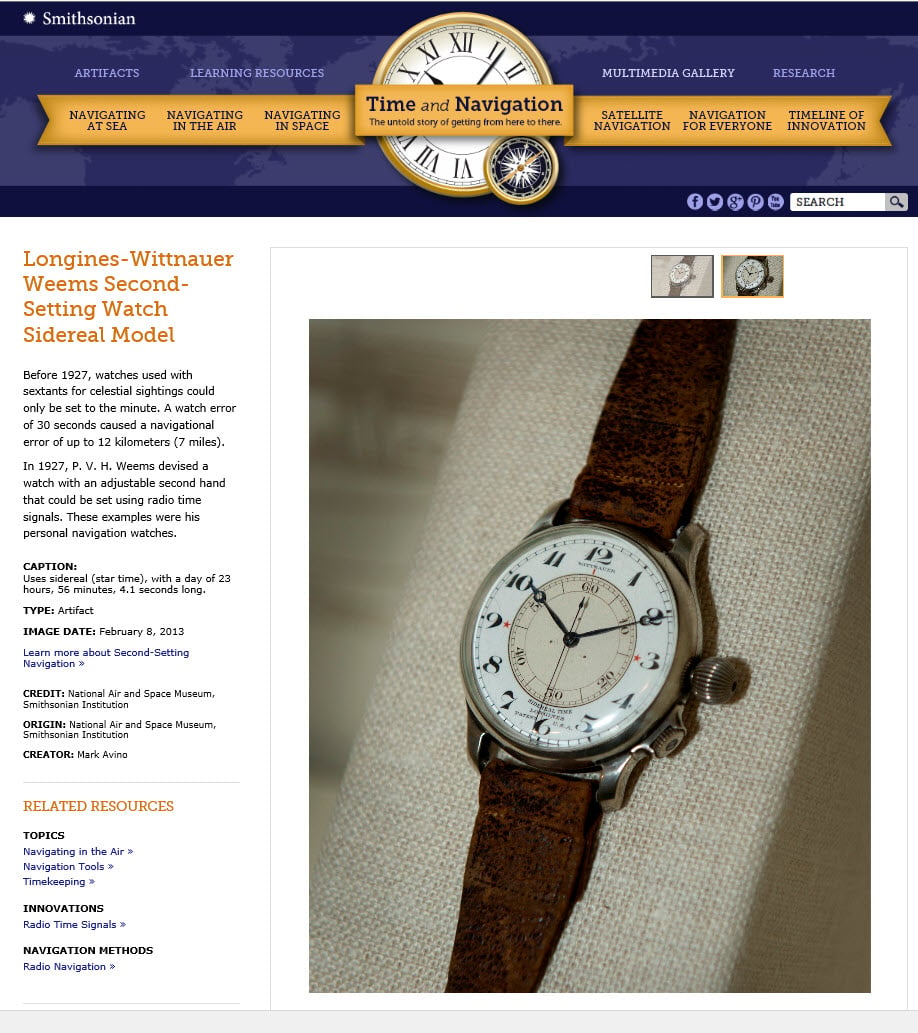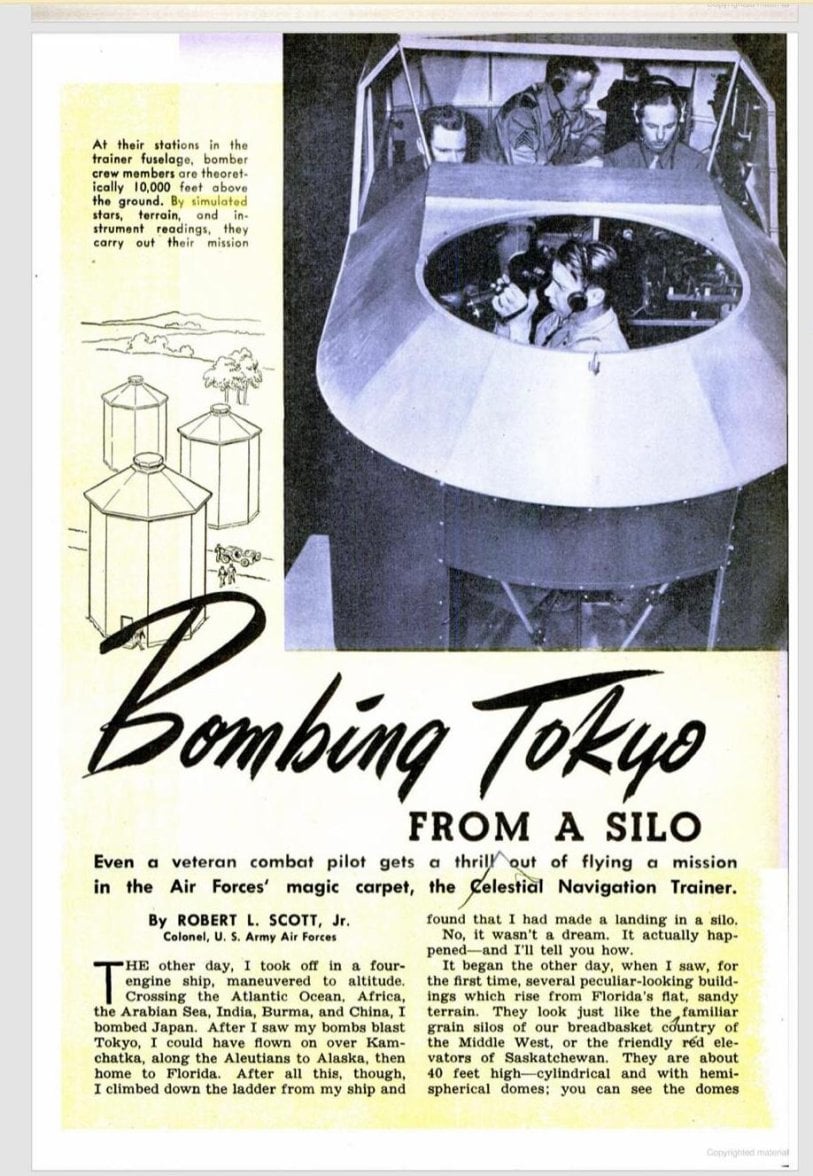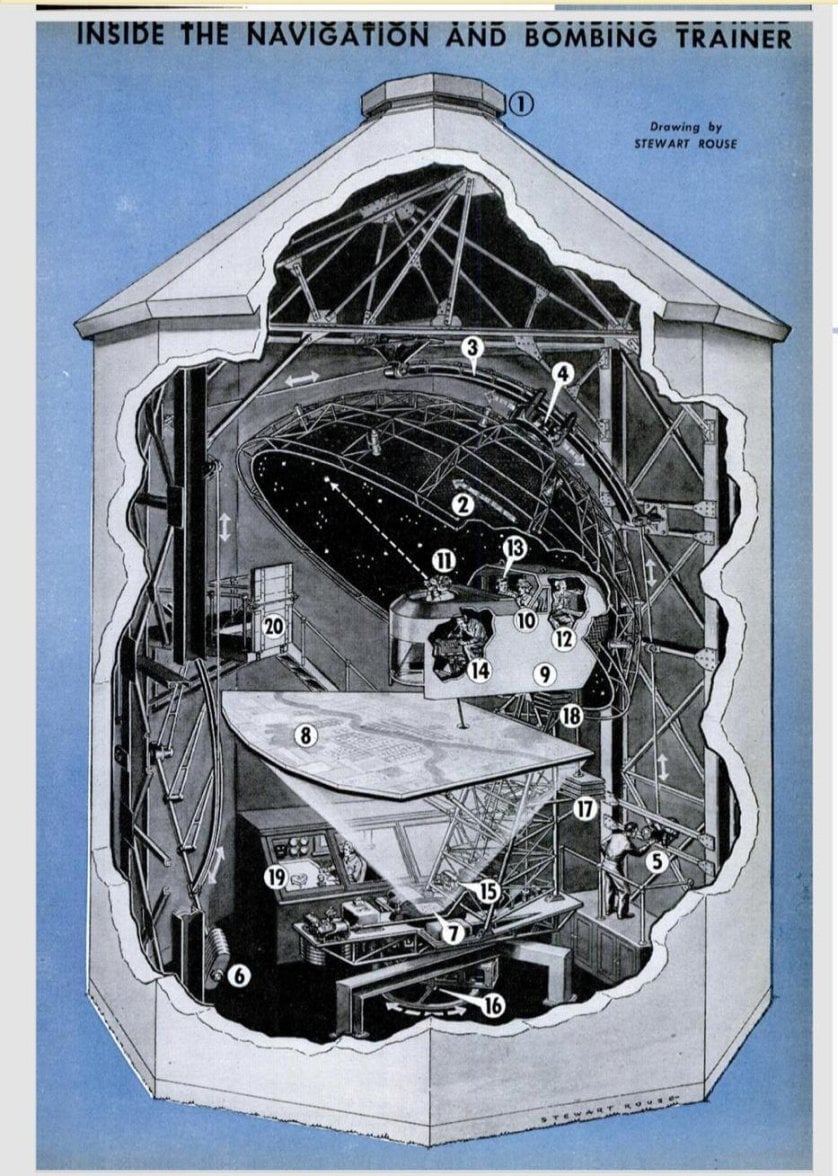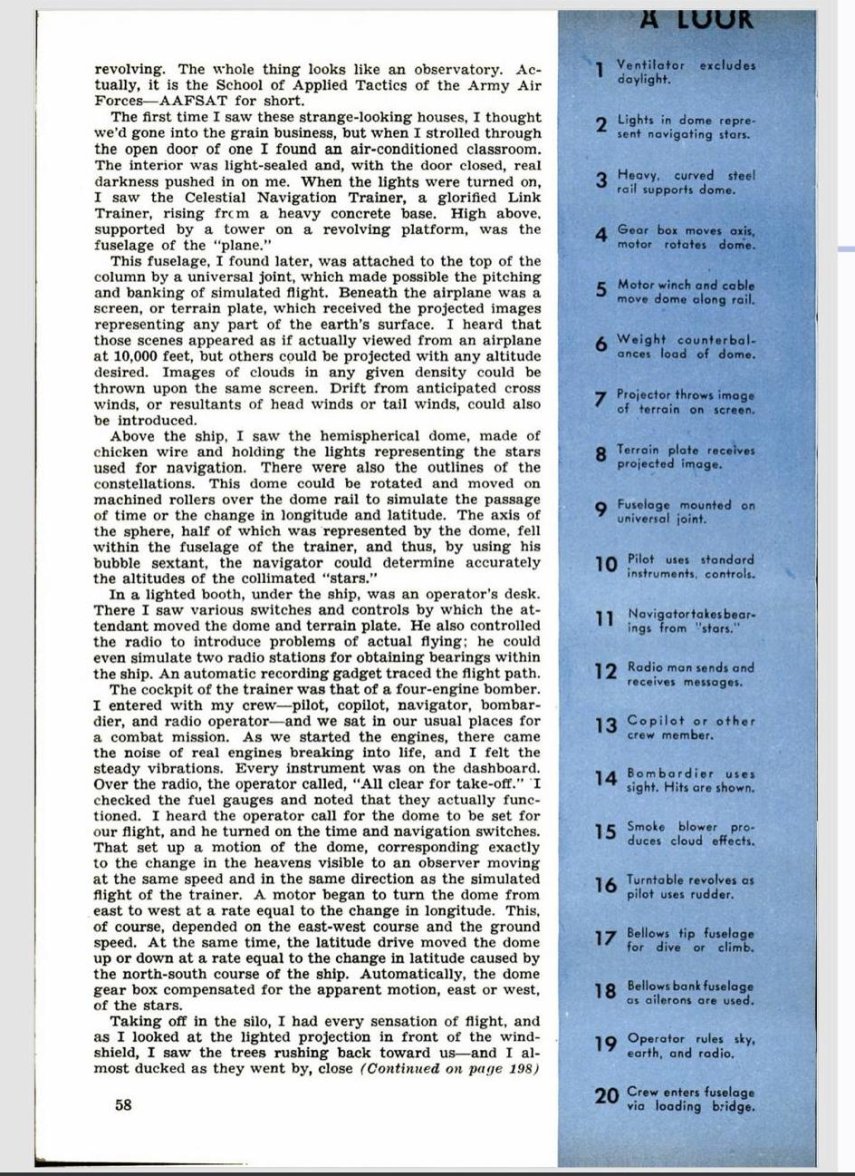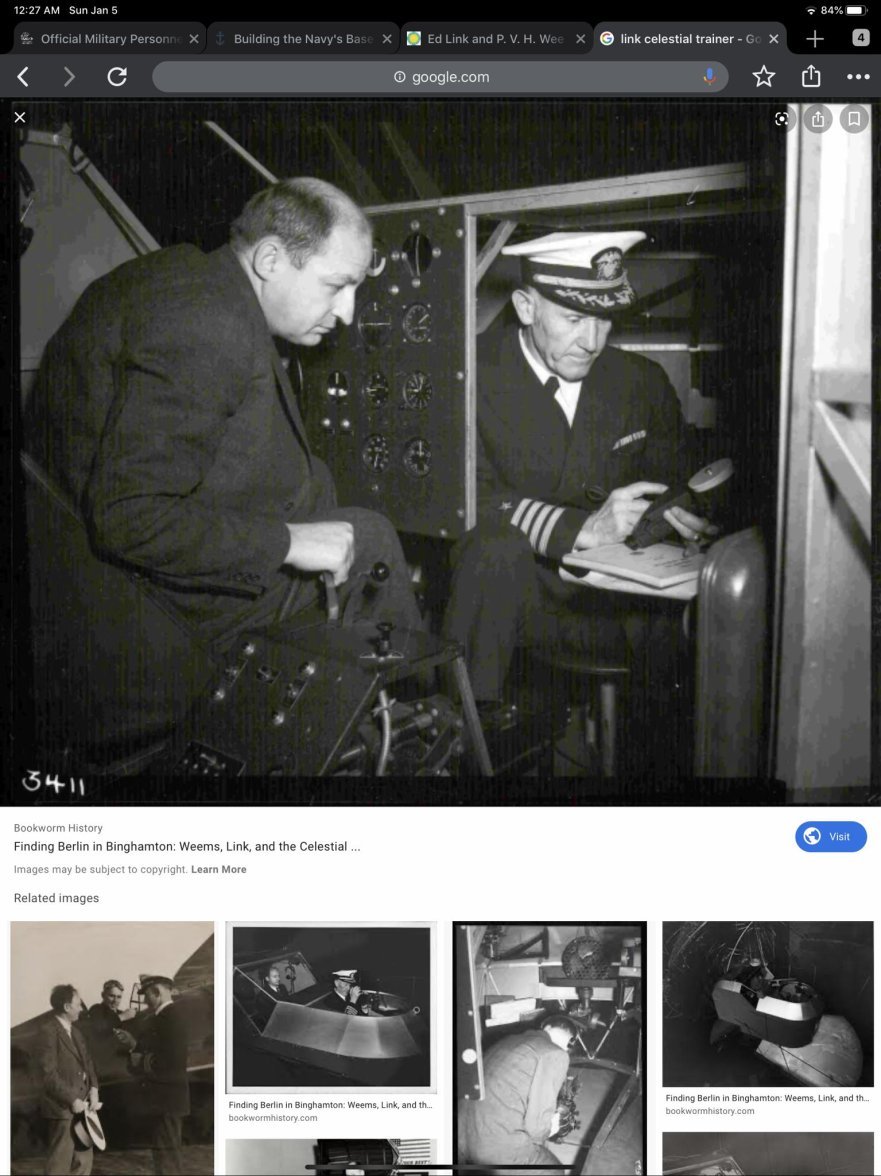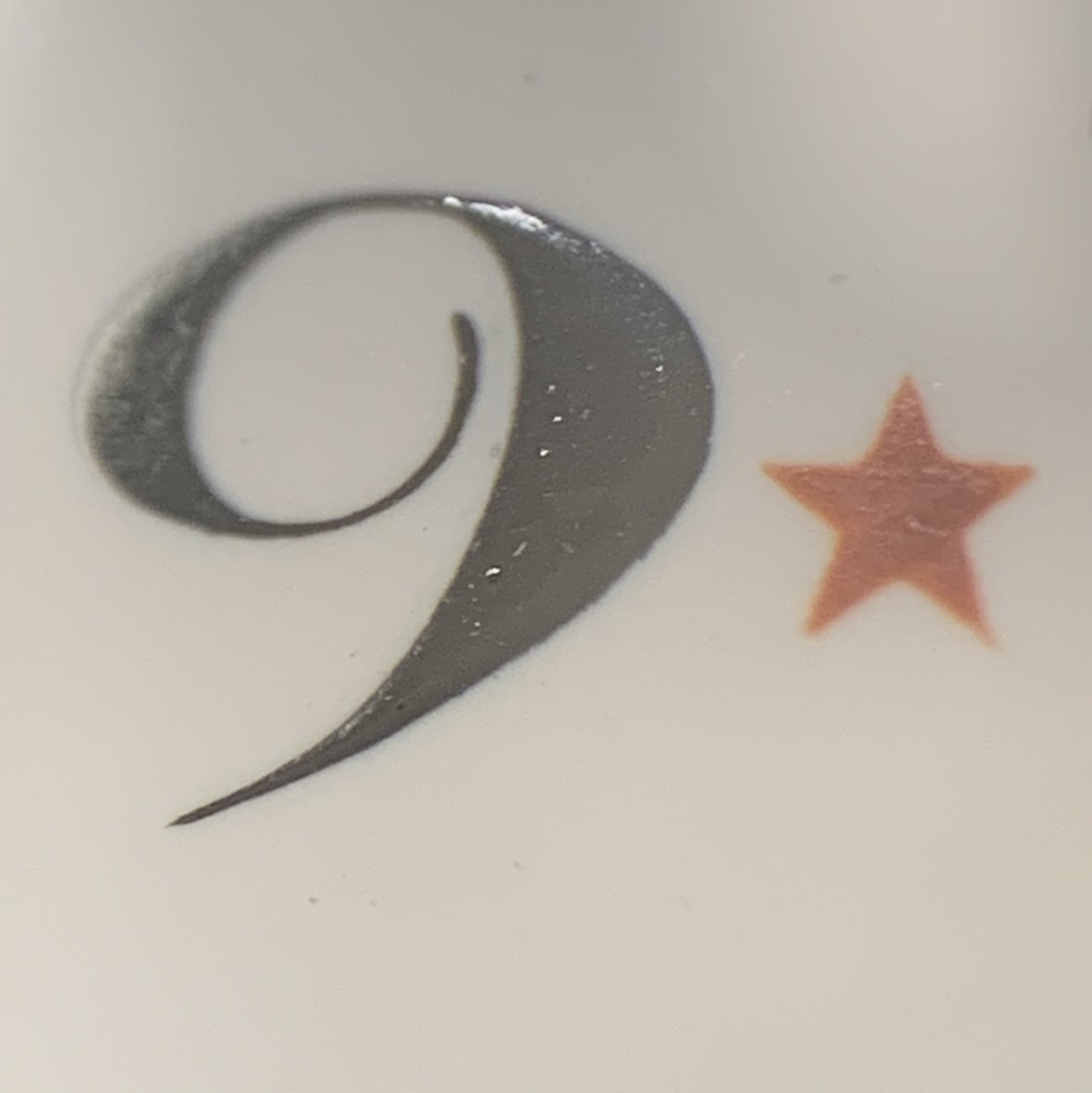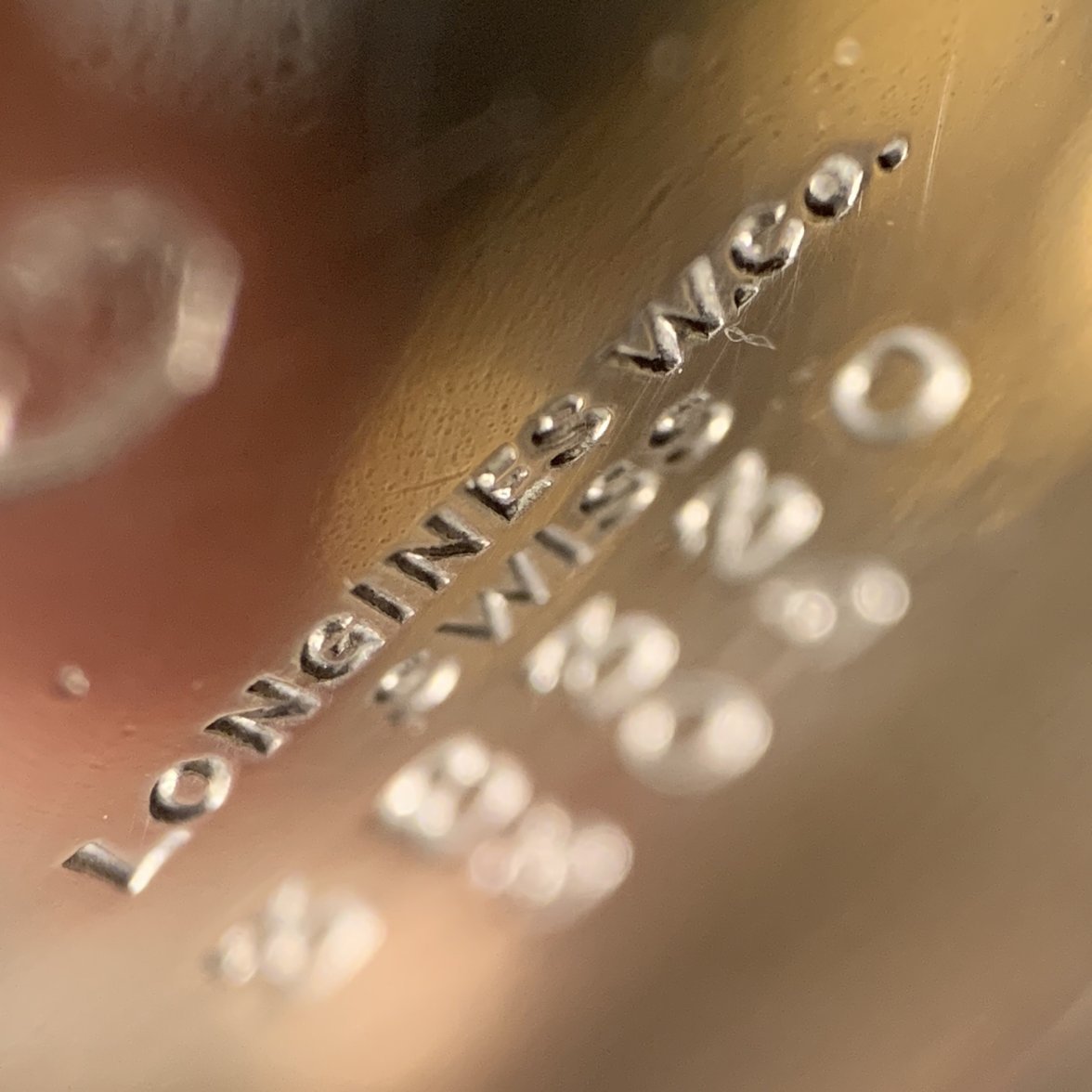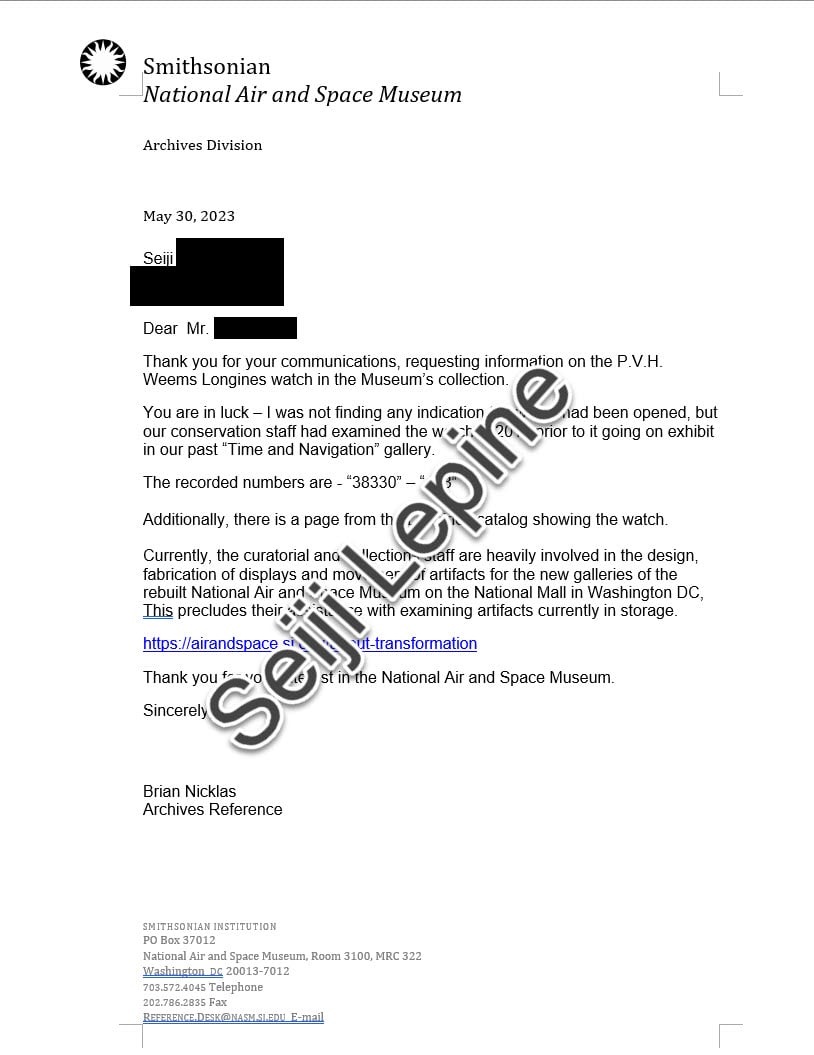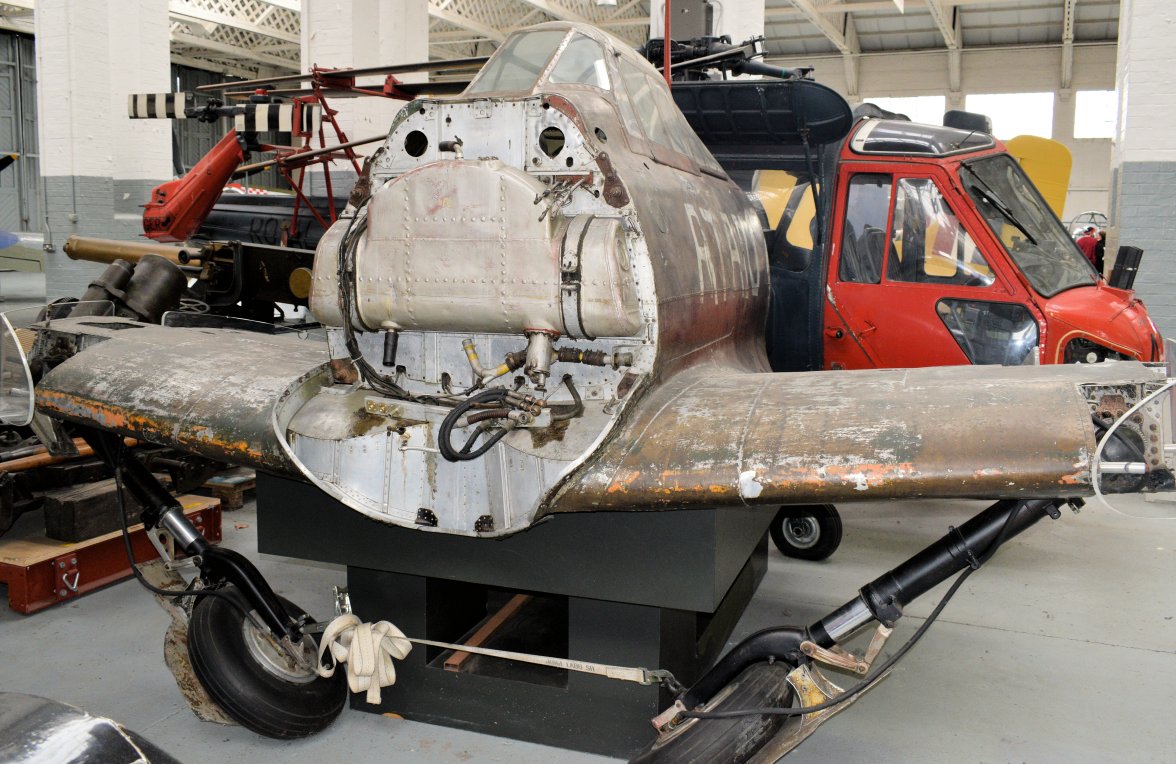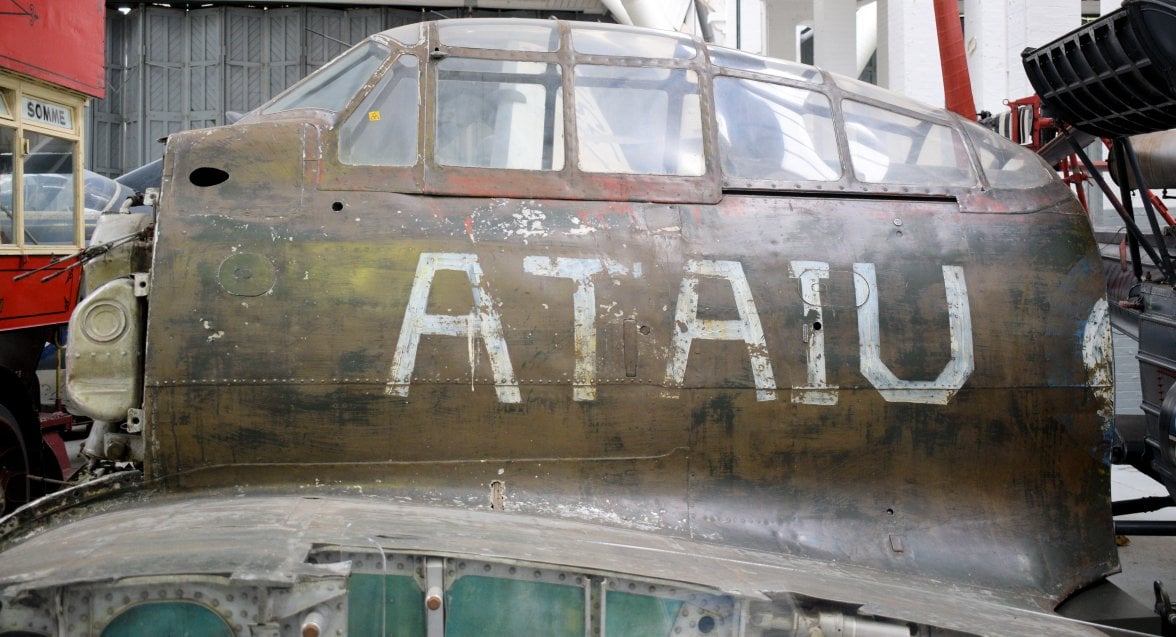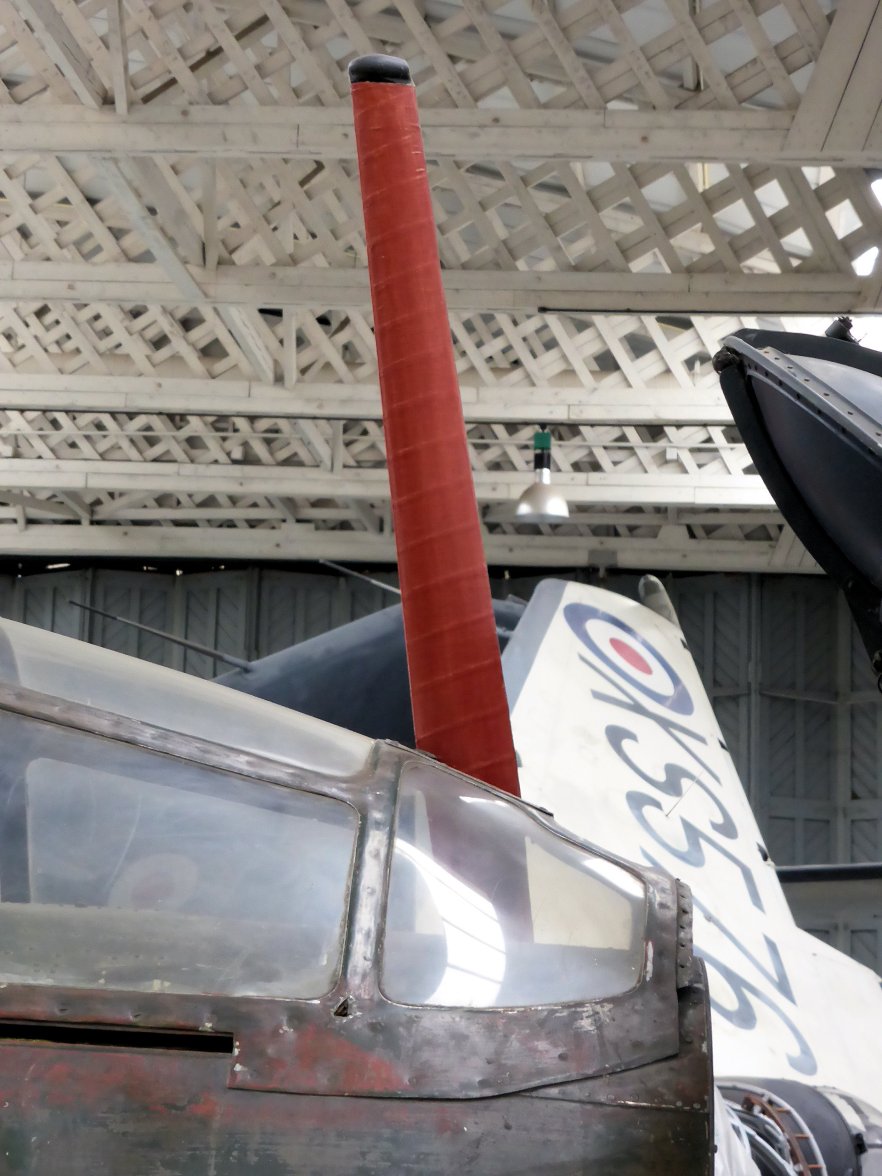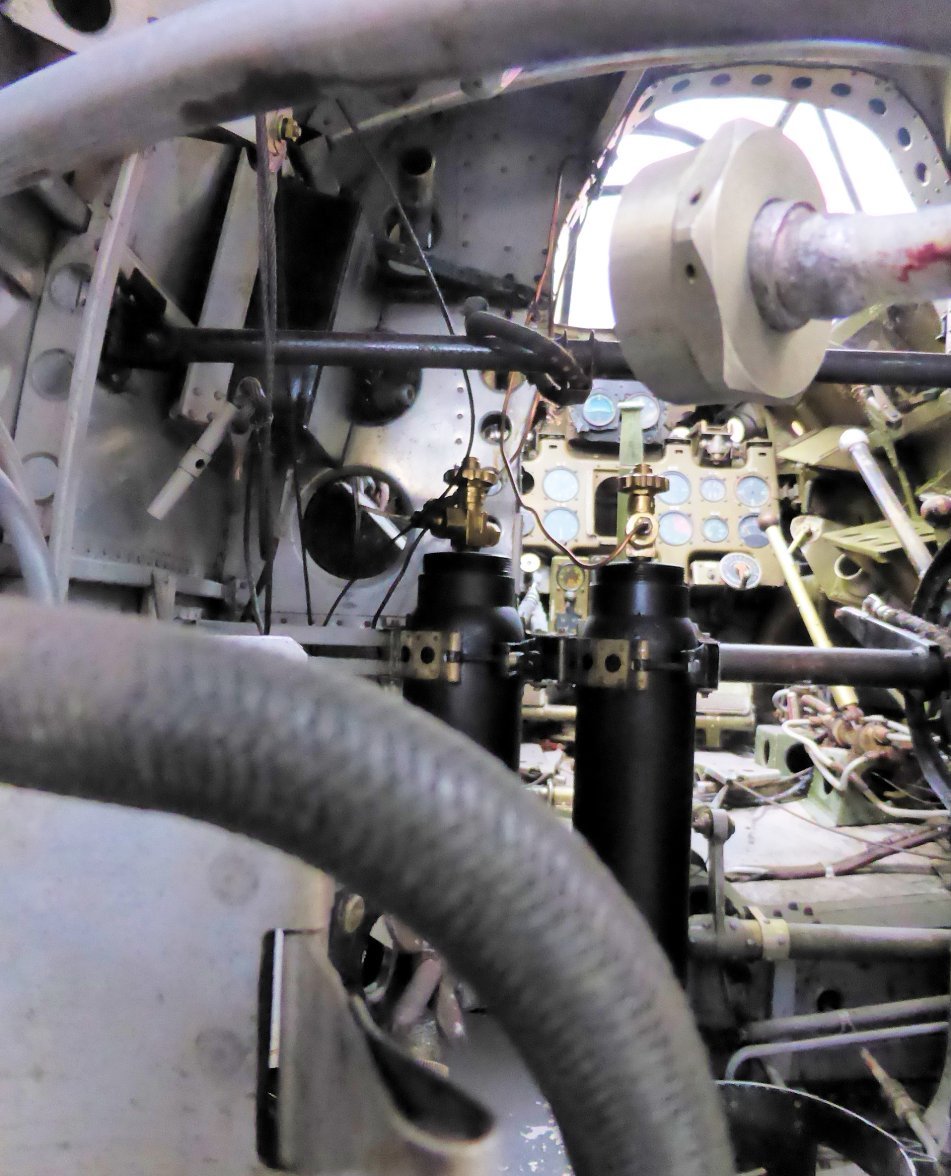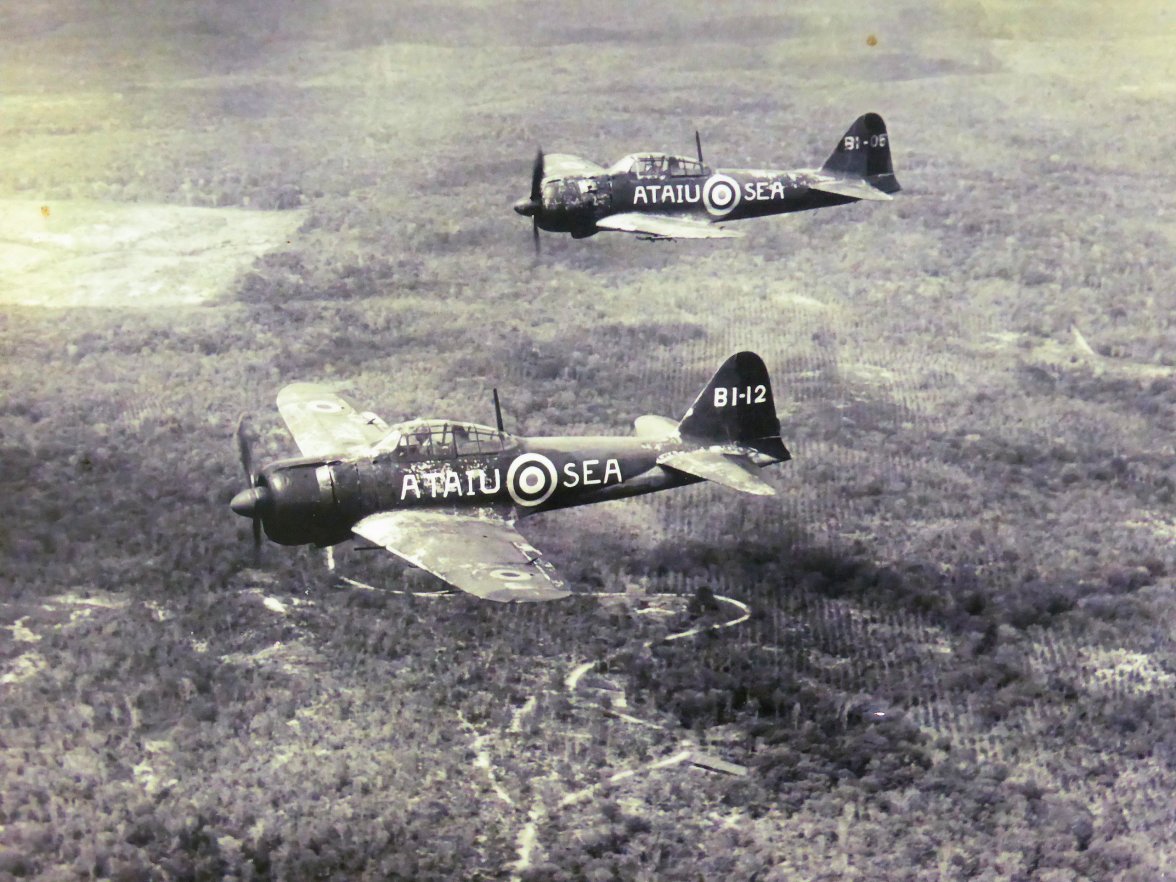Anyone have a historical watch?
Lépine
·Lépine
·Special Attack Squad [ edit ]

Kamikaze special attack unit "3rd Dragon Tiger Corps" organized by this machine, the fifth from the left is the captain Hirokami Mimura.
In order to make up for the lack of the original commercial aircraft, since this machine can run on alcohol fuel , the entire aircraft was painted in dark green, and drums were installed in the rear seats as additional tanks to increase the strength of the aircraft and increase the thrust of the engine . It was decided to be sent out for a special attack with a 250 kg bomb near the limit [1] . Fuyo unit commander Major Tadashi Minobe, at a meeting of the Combined Fleet held at Kisarazu base [Note 3] [2] [3] [4] [5] [6] [7] Although he claims to have opposed the military's policy of sending out training planes for suicide attacks [4] , the Japanese army, which had lost a large number of combat planes after losing the decisive battle in the Philippines, could be used as a force. I was forced into a situation where I had no choice but to spend anything.
In November 1944, crew members who had been on reconnaissance and anti-submarine patrol missions in the Okinawa Navy Air Corps were dispatched to Ishigaki Island and organized as the 'Ishigaki Island Detachment Corps'. In April 1945, the Allied Forces invaded Okinawa and the Battle of Okinawa began, and in May 1945, the "Ishigaki Island Expeditionary Force" moved to Hsinchu Air Base in Taiwan and was incorporated into the 132nd Naval Air Corps. At that time, all crew members were appointed as Kamikaze members regardless of whether they volunteered or not. It is said that the crew could not hide their surprise when they heard that it was a special attack sortie with this aircraft, not a seaplane reconnaissance plane or a carrier-based bomber, which they had been piloting until now.[ 8 ]
The kamikaze pilots moved to the Torao base and underwent intense training. Originally, the pilots of the "Ishigaki Island Expeditionary Force", which was formed from actual combat units, were highly skilled compared to the average Japanese airmen at the time, and the platoon leader, a non-commissioned officer, had two years of piloting and had about 800 hours of flight time. , Even the youngest and most inexperienced crew members have about 300 hours, and while there are many kamikaze pilots who sortie with a flight time of about 100 hours, it can be said that there were relatively skilled crew members. The pilots had to sortie at night in order to carry out a suicide attack with this slow machine, and they had to fly at an altitude of 5 meters above the sea surface, which was not detected by radar. At first, it was ``a feeling of helplessness, like trudging down a dark night all by yourself'' and ``everything was full of distrust and anxiety. [9 ] . Prioritized deployment of new models such as the latest model of the Zero Fighter, the Zero Fighter Model 52 Hei , and the night fighter version of the Comet 12 dive bomber [10] , saving fuel. Or, in order to reduce the burden of navigation on inexperienced crews, the flight cruise altitude was set to 3,000m to 4,000m, which is easy to fly, and the first line like the Fuyo unit, which did not have particularly effective radar countermeasures. It was necessary to impose such rigorous training because the given aircraft and the situation in which it was placed were too different from the unit . [11]
The kamikaze corps made up of crew members undergoing training at Torao base was named "Dragon Tiger Corps" after the name of the base. In addition to the crew members of the "Ishigaki Island Expeditionary Force", among the members of the Ryuko Corps, there were elite fighters with extremely high piloting skills who had no choice but to undergo night bombing training with this machine due to the depletion of Zero Fighters at Torao Base . 12] According to Second Lieutenant Kazuo Tsunoda, a veteran Zero Fighter pilot, among experienced crew members, crew members who had a large number of aircraft damage due to forced landings, and crew members who had a large number of times to turn back during a sortie for some reason were also punished . [ 13 ] The first-come-first-served "Dragon and Tiger Corps" began on May 20, 1945 with 8 "1st Dragon and Tiger Corps" machines, and on June 9, 8 "2nd Dragon and Tiger Corps" machines sortied from Taiwan. However, due to weather and other problems, they crash-landed on Miyakojima , Ishigakijima , and Yonagunijima , and failed to attack . [14]
After two failures, it seems unreasonable to carry a 250kg bomb on this training aircraft for a long flight. Therefore, it was decided to shorten the flight distance by advancing to Miyako Island. Eight aircraft commanded by Hirokami Mimura , who has led the crew since the "Ishigaki Island Expedition", advanced to Miyako Island and on July 29, 1945, as the "3rd Dragon and Tiger Corps". A sortie was ordered. Miyakojima Airfield has a short runway, low speed, and an excessively heavy aircraft weight with a 250kg bomb. Although the ground personnel were impressed, only Shojiro Sahara's plane failed to take off due to a punctured wheel. The 3rd Dragon and Tiger Squad consisted of seven aircraft, but one of them, captain Mimura and 1st Petty Officer Setsuo Yoshida, had engine trouble and turned back. Yoshida was seriously injured and could not sortie again, and as a result became the only survivor of the "3rd Dragon Tiger Corps " .

Destroyer Callahan sunk by special attack by this machine
At 12:31 a.m., on radar picket duty 35 miles due west of the main island of Okinawa , the three destroyers Callaghan , Cassin Young , and Pritchett approached. At 34 minutes, Callahan spotted an unidentified aircraft coming in and, judging it as an enemy aircraft, began bombarding it, but it was already approaching within 200m. The reason why this aircraft was not detected at such a short distance is that it was approaching by flying skillfully at a low altitude, and because the aircraft was made of wood and cloth, it was difficult to detect with radar.[ 16 ] Callahan's CM Bartholf was surprised to learn that the approaching enemy plane was neither a Zero fighter nor a naval bomber, but a biplane flying at a slow speed of 85 knots, but the plane was completely destroyed by the rain of anti-aircraft fire. As if she hadn't been damaged, she crashed into the vicinity of the No. 3 upper ammunition compartment, and her bombs penetrated the deck and exploded in the machine room, killing all the crew in the machine room. It seemed only a matter of time before the raging fire from the aviation fuel onboard would reach the ammunition depot, so Captain Bertholf ordered the ship to abandon ship. Callaghan, who had been fighting kamikaze planes since the beginning of the Battle of Okinawa, was supposed to be able to return to Japan after this was her last mission. , 46 enlisted men were killed in action, 73 were injured, and sank from the stern about 3 hours after the kamikaze aircraft rushed in. [ 17]

On board the destroyer Cassin Young, which was wrecked by a special attack by this aircraft.
"Cassin Young" and "Pritchett" were rescuing the crew of the sinking "Callaghan", but a few hours after the "Callaghan" was attacked, two kamikaze planes appeared and rescue operations were underway. I ran into the ship. The two ships exposed the kamikaze planes to heavy anti-aircraft fire, but like the one that crashed into Callahan, these bullets hit the kamikaze planes, but they all penetrated and did not seem to cause damage. It looked like One of them hit the Pritchett, but due to a bad angle and oblique impact, it fell into the sea without serious damage. Another plane was finally shot down by anti-aircraft fire at a distance of 30m just before hitting the "Cassin Young " .
Commanders Mimura and Sahara, who were unable to sortie due to machine failure and puncture, sortied from Miyakojima on the following day, July 30, with just two planes. Carrying the wounded crew of Callahan to a hospital ship, he made contact with Cassin Young, who had returned to radar picket duty, and Pritchett. Once again, skillful low-altitude flight and wooden/fabric fuselage allowed the two ships to spot the kamikaze as it climbed and then began a steep descent to enter. The anti-aircraft fire did not arrive in time, and the kamikaze aircraft hit the davit for the rescue boat at the rear of "Cassin Young", and the ship was severely damaged, 27 people were killed and 41 were injured.[19 ] , Inadvertently rushed into the target that his comrades had missed the day before . [15]
The remaining aircraft also approached the transport destroyer Horace A. Bass on anti-submarine patrol missions at low altitude, and when spotted, hit the ship's superstructure , knocking it down , and destroying it. [20] 1 killed and 15 wounded . In the attack of the "3rd Dragon and Tiger Squad" that lasted for two days, the U.S. Navy lost 1 destroyer, 1 destroyed, 2 damaged, 75 dead and 129 wounded in 4 ships. [ 18 ]
The U.S. military, which suffered a painful attack on only seven aircraft, recognized the threat of the special attack on the training aircraft, analyzed the factors that had a large effect as follows, and had the same or higher vigilance as the special attack by the new high-speed aircraft. calling [21]
- It is made of wood or cloth, and the range that can be detected by radar is short.
- Proximity fuze is difficult to operate (ordinary aircraft operates at a radius of 100 feet (approximately 30m), but the Type 93 intermediate trainer operates only at 30 feet (approximately 9m)).
- The anti-aircraft Mk.IV 20mm cannon is ineffective because if it does not hit metal parts such as engines and tanks, the fuze will not operate and it will penetrate. However, the Bofors 40 mm cannon was also effective in wooden and upholstered parts.
- It was highly maneuverable and skillfully maneuvered.
On the American side, old-fashioned aircraft such as fixed landing gear that had become difficult to even attack American warships with normal attacks, such as this aircraft and the same training aircraft Shiragiku and Type 99 carrier-based bombers, were successful in special attacks . Seeing what you mention, "these tactics [attacks] had the attendant advantage of being able to be used in operations even with biplanes and outdated fixed-leg aircraft like the Val. " [26 ] .
In the mainland decisive battle , training aircraft centered on this machine were also planned to be introduced as kamikaze aircraft, and a total of 4,450 training aircraft of the army and navy had been modified for kamikaze use [27 ] . A total of 5,591 land and seaplanes were produced [28], of which nearly half were made by Nippon Airplanes, but due to the large number of aircraft manufactured and their role as training aircraft, the number of surviving aircraft at the end of the war was the Navy . model was the most common.

A life-size model of the Hitoyoshi Naval Air Base Museum
After the war , during the Indonesian War of Independence, the Type 93 intermediate trainer was widely used as a trainer by the Indonesian Republican Army . However, most of them were almost destroyed by 1947 (Showa 22) due to bombing of the airfield by the Dutch Air Force of Indonesia's former colonial power. One of them is currently preserved at the Satria Mandala Museum in Indonesia .
Also, from 2021 , a full-scale model will be exhibited at the
Hitoyoshi Naval Air Base Museum (Himitsu Base Museum) in Hitoyoshi City, Kumamoto Prefecture .
So this wasn't the work of remedial Kamikaze juniors.
These were originally Reconnaissance pilots used to getting close to USA targets undetected.
that became kamikaze using Japanese first improvised "Stealth Technology" fighters.
Edited:
Lépine
·Likely Longines Weems:
This is another film by NHK made during WW2. This crew is on board the Mitsubishi G4M attack bomber.
There are many images of polished silver big pilot watches including one that strongly resembles a Longines Weems.
What this film shows is the clear role the big pilot watch plays in reconnaissance tasks for these types of celestial navigation watches.
Arrows pointing to wrists show unidentifiable large watches. One image shows what strongly resembles the side view of a highly polished watch that so far can only be identified as a Weems since no other Japanese Navy watch resembles that image during the Sino-Japanese and Pacific Wars. Only the Seikosha is that big of a wrist watch but it has a black dial and is not polished metal.
Bomber







Wrist shots of the crew




Only a Longines Weems looks like this in the IJN.

This is the film cartridges

Installing it on a camera

Shooting from the belly camera

Developing the film

Recon Photographs

This is another film by NHK made during WW2. This crew is on board the Mitsubishi G4M attack bomber.
There are many images of polished silver big pilot watches including one that strongly resembles a Longines Weems.
What this film shows is the clear role the big pilot watch plays in reconnaissance tasks for these types of celestial navigation watches.
Arrows pointing to wrists show unidentifiable large watches. One image shows what strongly resembles the side view of a highly polished watch that so far can only be identified as a Weems since no other Japanese Navy watch resembles that image during the Sino-Japanese and Pacific Wars. Only the Seikosha is that big of a wrist watch but it has a black dial and is not polished metal.
Bomber







Wrist shots of the crew




Only a Longines Weems looks like this in the IJN.

This is the film cartridges

Installing it on a camera

Shooting from the belly camera

Developing the film

Recon Photographs

Edited:
Omegafanman
·Thanks for the time and effort taken to discover all this. I am certainly learning a lot / it is fascinating to understand more about the whole conflict and the technologies used by all sides.
Lépine
·Thanks for the encouragement. Military watches for non-interested can be a bit of a sticky subject. Especially for Axis Powers watches. I am interested in both sides as hopefully evident by my earlier posts. Luke Skywalker is interesting, but so was Darth Vader. I find it interesting to learn how all the watches were originally used by their owners. I think military watches, we really need to know what they were designed for to truly appreciate them.
As apparent from this NHK New Reel, there is enough evidence of big pilots in this one film that I am certain looking through information about aerial reconnaissance should lead eventually better image of a Longines Weems. I found there is sometimes a bit of a problem with these NHK films. Some of them spliced footages in ways that makes it difficult to follow the narrative, hence between two films, I am not certain if the clear image of the side of a "Weems" is from a Type 96 bomber as annotated or from a G4M Betty. Type 96 bomber would indicate a much stronger association with the reconnaissance school at Tateyama AG where the Yokosuka Willow was heavily used. With the G4M Betty there is more of a gap in the possibilities of how the Betty flight crew got assigned big pilot watches. There were 4 of them on one plane. The Observer, Photographer, Bombardier, and person on intercom had them. That's a lot of big pilots. Surprisingly, the navigator was not wear any watch. I didn't see what he was using for timing. This New Reel is also after 1942. They have the newer style Kikusui rank insignias at their air base.
They flew the reconnaissance mission over New Guinea.

As apparent from this NHK New Reel, there is enough evidence of big pilots in this one film that I am certain looking through information about aerial reconnaissance should lead eventually better image of a Longines Weems. I found there is sometimes a bit of a problem with these NHK films. Some of them spliced footages in ways that makes it difficult to follow the narrative, hence between two films, I am not certain if the clear image of the side of a "Weems" is from a Type 96 bomber as annotated or from a G4M Betty. Type 96 bomber would indicate a much stronger association with the reconnaissance school at Tateyama AG where the Yokosuka Willow was heavily used. With the G4M Betty there is more of a gap in the possibilities of how the Betty flight crew got assigned big pilot watches. There were 4 of them on one plane. The Observer, Photographer, Bombardier, and person on intercom had them. That's a lot of big pilots. Surprisingly, the navigator was not wear any watch. I didn't see what he was using for timing. This New Reel is also after 1942. They have the newer style Kikusui rank insignias at their air base.
They flew the reconnaissance mission over New Guinea.

Edited:
Lépine
·Thanks to Steve from Italy, we have more details about 960.
Serial number ranges for the reference 4356 ranges from 5'941'8xx to 5'942'2xx at this point.
There is one watch a little out on its own that most likely is all original that has a greater serial number but very low individual number and also the largest issue number 1403
Serial number ranges for the reference 4356 ranges from 5'941'8xx to 5'942'2xx at this point.
There is one watch a little out on its own that most likely is all original that has a greater serial number but very low individual number and also the largest issue number 1403
Lépine
·Way off topic: Fun facts about Zero identification numbers.
http://mitsubishi_zero.tripod.com/identity.htm
"Zero constructors numbers are a puzzle in themselves, and were deliberately designed as such. It is a common practice to arrange manufacturer's number sequences on 'state of the art' military equipment so that enemy intelligence will find it difficult to deduce the number built by a given date and thus deduce the rate of production.
Mitsubishi-manufactured A6Ms had a fictitious leading digit. Thus the first Zero was given construction number 201, the second one 302. This system was used right through to c/n 3999 (an A6M5). Thus to obtain the correct number for any Mitsubishi-assembled Zero in this range, simply ignore the first digit of the serial.
From this point on, Mitsubishi numbers ran in sequence - 4000, 4001, 4002 and so on. To get the correct number, deduct 3000 from the number quoted.
Other Zero manufacturers - Nakajima, Hitachi and Omura Naval Air Arsenal - used their own systems. In the case of Nakajima, their A6M2s used the false leading digit system. When production was switched to the A6M5, this system was retained but the numbers were restarted from 11 once more.
Unit numbers painted across the fin and rudder were standard on JNAF aircraft during the Pacific War, but underwent a number of changes. The system was complex, and the records of its application are often contradictory.
The prefix, which denotes the unit operating the aircraft, initially consisted of one or two Japanese characters for units based in Korea or Japan, a European letter for land-based units in a combat zone, and a European letter followed by a numeral for carrier-based units. By the middle of the war, this system had been superseded by a two or three numerical combination, loosely based on the unit code number. During the last years of the war, aircraft with either of these systems were encountered. As aircraft were lost, surviving units amalgamated both personnel and equipment, and single-numeral prefix codes were adopted, often as shortened forms of previous prefixes.
The suffix identified the aircraft. Where three digits were used, the first indicated the mission assigned to the aircraft, e.g. 1 indicated fighter, 5 carrier operations, 8 reconnaissance, etc. The last two digits identified the particular aircraft within that unit and mission. Thus, when an aircraft was transferred, for example, from an operational fighter unit to a training school, every digit of the fin code would change.
The fin code of 2-182 on the New Zealand aircraft would denote a fighter mission, not carrier or reconnaissance. In November 1943 land-based units at Rabaul which operated Zeros were 201 Kokutai (at one stage coded W1-), 204 Kokutai ( T2- ) 251 Kokutai ( V- ) and 582 Kokutai ( Q- ). About 1944, these units adopted a single-numerical unit code, known examples being 6-171 7-119 9-151 7-101 2-119 and 2-116. Zero 6-171 is know to have belonged to 204 Kokutai, so presumably the 2- prefix was a code for one of the other three units, and the New Zealand aircraft was at some stage assigned to that unit."
More:
https://en.wikipedia.org/wiki/Japanese_military_aircraft_designation_systems
http://rwebs.net/avhistory/acdesig/japanese.htm
This helps identify the aircraft squadron based off of tail number prefix.
https://en.wikipedia.org/wiki/List_of_air_groups_of_the_Imperial_Japanese_Navy
http://mitsubishi_zero.tripod.com/identity.htm
"Zero constructors numbers are a puzzle in themselves, and were deliberately designed as such. It is a common practice to arrange manufacturer's number sequences on 'state of the art' military equipment so that enemy intelligence will find it difficult to deduce the number built by a given date and thus deduce the rate of production.
Mitsubishi-manufactured A6Ms had a fictitious leading digit. Thus the first Zero was given construction number 201, the second one 302. This system was used right through to c/n 3999 (an A6M5). Thus to obtain the correct number for any Mitsubishi-assembled Zero in this range, simply ignore the first digit of the serial.
From this point on, Mitsubishi numbers ran in sequence - 4000, 4001, 4002 and so on. To get the correct number, deduct 3000 from the number quoted.
Other Zero manufacturers - Nakajima, Hitachi and Omura Naval Air Arsenal - used their own systems. In the case of Nakajima, their A6M2s used the false leading digit system. When production was switched to the A6M5, this system was retained but the numbers were restarted from 11 once more.
Unit numbers painted across the fin and rudder were standard on JNAF aircraft during the Pacific War, but underwent a number of changes. The system was complex, and the records of its application are often contradictory.
The prefix, which denotes the unit operating the aircraft, initially consisted of one or two Japanese characters for units based in Korea or Japan, a European letter for land-based units in a combat zone, and a European letter followed by a numeral for carrier-based units. By the middle of the war, this system had been superseded by a two or three numerical combination, loosely based on the unit code number. During the last years of the war, aircraft with either of these systems were encountered. As aircraft were lost, surviving units amalgamated both personnel and equipment, and single-numeral prefix codes were adopted, often as shortened forms of previous prefixes.
The suffix identified the aircraft. Where three digits were used, the first indicated the mission assigned to the aircraft, e.g. 1 indicated fighter, 5 carrier operations, 8 reconnaissance, etc. The last two digits identified the particular aircraft within that unit and mission. Thus, when an aircraft was transferred, for example, from an operational fighter unit to a training school, every digit of the fin code would change.
The fin code of 2-182 on the New Zealand aircraft would denote a fighter mission, not carrier or reconnaissance. In November 1943 land-based units at Rabaul which operated Zeros were 201 Kokutai (at one stage coded W1-), 204 Kokutai ( T2- ) 251 Kokutai ( V- ) and 582 Kokutai ( Q- ). About 1944, these units adopted a single-numerical unit code, known examples being 6-171 7-119 9-151 7-101 2-119 and 2-116. Zero 6-171 is know to have belonged to 204 Kokutai, so presumably the 2- prefix was a code for one of the other three units, and the New Zealand aircraft was at some stage assigned to that unit."
More:
https://en.wikipedia.org/wiki/Japanese_military_aircraft_designation_systems
http://rwebs.net/avhistory/acdesig/japanese.htm
This helps identify the aircraft squadron based off of tail number prefix.
https://en.wikipedia.org/wiki/List_of_air_groups_of_the_Imperial_Japanese_Navy
Edited:
Lépine
·Lépine
·Here is an interesting watch that I bought many years ago. We have a few people that hate this watch and it's probably understandable. But this is a naval watch, submarines warfare was done by all sides and the Germans were arguably the best at it.

This is a venerable Kaliber 48. One of Adolf Lange & Söhne best war time movements. In the Kreigsmarine, this was one of two calibers that had the highest specifications for accuracy. Among military watch collectors, this deck watch is regarded quite highly.
Founder:
"Son of Johann Samuel Lange, Ferdinand Adolph Lange was born in 1815. Early in life, his parents were separated, and he was adopted by a foster family. Luckily for him, and for us, his family offered him a chance of proper education and in 1829, he joined the Technical University of Dresden. The studies were demanding, six days of week, divided as three days of theoretical work and three days of manual craftwork, accompanied by a student’s master. Faith, it seems, Lange’s master was none other than Christian Friedrich Gutkaes, maker of the famous 5-minute clock in Dresden Opera House and the court watchmaker later-on." - Glashütte Watch Museum and Mr. M.
Zaf Basha did a bit of research into this watch by sending this watch to Glashütte Museum (A. Lange Söhne Museum).
Here is information from the Glashütte Museum:
Here is the original order:

Here is the known history:
It appears this watch was captured during the May destruction of the factory. The Russian army took the watch.

Each of these Kaliber 48 deck watches that made it to the Kreigsmarine was assigned to a ship. It is possible with records to identify the exact ship the watch spent its career onboard a boat. Germans of course kept great records.
The majority of these watches have a silver metal dial with the classic A. Lange Söhne dial style printed on it.
Considering the numbers of these watches in total that were created, many of the current survivors are from surface boats. And according to German laws passed after the end of WW2, the Third Reich emblems must be destroyed. Kaliber 48 with any military markings are therefore very difficult to find even though there are a few regular sightings of Kaliber 48 deck watches. So not all of these watches were sunk in the Atlantic.
Sub surface warfare was a much more difficult environment to survive. By the time of Operation Deadlight, which included the disposal of any remaining submarines surrendered at the end of the war, there were only 154 U-boots remaining. I am sure any assigned watches for these boats were not sunk with the ships, but of the 154 left, 121 boats were then scuttled.
So how is it possible to know this watch was built for the Wolf Packs? That turns out to be very easy. Only the U-boot watches can do this. Surface boat watches do not have this glowing dial.

The watch was designed so that the navigator of the U-boot could continue to track the location of the boat using dead reckoning. The submarines would travel to a site and then once a target was acquired, switch to "Red Light" mode for night time missions. This allowed the captain to maintain his night vision to spot targets. It also kept the submarine hidden in the dark.
And this watch by the fact it was captured and taken to Russia, it still has the rare Keigsmarine markings.


This is a venerable Kaliber 48. One of Adolf Lange & Söhne best war time movements. In the Kreigsmarine, this was one of two calibers that had the highest specifications for accuracy. Among military watch collectors, this deck watch is regarded quite highly.
Founder:
"Son of Johann Samuel Lange, Ferdinand Adolph Lange was born in 1815. Early in life, his parents were separated, and he was adopted by a foster family. Luckily for him, and for us, his family offered him a chance of proper education and in 1829, he joined the Technical University of Dresden. The studies were demanding, six days of week, divided as three days of theoretical work and three days of manual craftwork, accompanied by a student’s master. Faith, it seems, Lange’s master was none other than Christian Friedrich Gutkaes, maker of the famous 5-minute clock in Dresden Opera House and the court watchmaker later-on." - Glashütte Watch Museum and Mr. M.
Zaf Basha did a bit of research into this watch by sending this watch to Glashütte Museum (A. Lange Söhne Museum).
Here is information from the Glashütte Museum:
Here is the original order:

Here is the known history:
It appears this watch was captured during the May destruction of the factory. The Russian army took the watch.

Each of these Kaliber 48 deck watches that made it to the Kreigsmarine was assigned to a ship. It is possible with records to identify the exact ship the watch spent its career onboard a boat. Germans of course kept great records.
The majority of these watches have a silver metal dial with the classic A. Lange Söhne dial style printed on it.
Considering the numbers of these watches in total that were created, many of the current survivors are from surface boats. And according to German laws passed after the end of WW2, the Third Reich emblems must be destroyed. Kaliber 48 with any military markings are therefore very difficult to find even though there are a few regular sightings of Kaliber 48 deck watches. So not all of these watches were sunk in the Atlantic.
Sub surface warfare was a much more difficult environment to survive. By the time of Operation Deadlight, which included the disposal of any remaining submarines surrendered at the end of the war, there were only 154 U-boots remaining. I am sure any assigned watches for these boats were not sunk with the ships, but of the 154 left, 121 boats were then scuttled.
So how is it possible to know this watch was built for the Wolf Packs? That turns out to be very easy. Only the U-boot watches can do this. Surface boat watches do not have this glowing dial.

The watch was designed so that the navigator of the U-boot could continue to track the location of the boat using dead reckoning. The submarines would travel to a site and then once a target was acquired, switch to "Red Light" mode for night time missions. This allowed the captain to maintain his night vision to spot targets. It also kept the submarine hidden in the dark.
And this watch by the fact it was captured and taken to Russia, it still has the rare Keigsmarine markings.

Edited:
Lépine
·Lépine
·Thanks for sharing this fantastic watch! These were the finest watches that Glashute produced in the 1940s. Every marine
ships chronometer, hack watch, aviation B-uhr and marine B-uhr including the incredible 65mm V2 rocket B-uhr had this Kaliber 48 movement.
Have you checked this site to see if your watch movement number is listed?
https://www.dg-chrono.de/uhrenwisse...d-uhren/1945-2000/als-reparationen/b-uhren-2/
I haven't put the time into it yet to find them, but apparently there are records of the assignments of these watches.
Lépine
·https://ameblo.jp/yrspirit/entry-12692309136.html
I am able to determine that the members of the 3rd Dragon and Tiger Corps were made from Ishigaki Island Expeditionary Force, which was a composite of reconnaissance team and Zero Fighter squadrons. This seems similar to the role of the G4M Betty Reconnaissance photographers onboard the Betty bombers.

I am able to determine that the members of the 3rd Dragon and Tiger Corps were made from Ishigaki Island Expeditionary Force, which was a composite of reconnaissance team and Zero Fighter squadrons. This seems similar to the role of the G4M Betty Reconnaissance photographers onboard the Betty bombers.

Lépine
·I found this in the NHK ( Japan National News Television ) archives. This provides support that
many members of the 3rd Dragon and Tiger Corp came from the Ishigaki Island Expeditionary Force.
https://www2.nhk.or.jp/archives/movi...01130253_00000




many members of the 3rd Dragon and Tiger Corp came from the Ishigaki Island Expeditionary Force.
https://www2.nhk.or.jp/archives/movi...01130253_00000




Edited:
Lépine
·I now have confirmation from the Smithsonian that the watch that P.V.H. Weems used for the US. Navy for the CNT simulators is order number 38330. I have a watch from the same order. His number was in the mid 100s. This is substantial information for an order that was 30 times larger than typical Sidereal Weems orders.
Edited:
Lépine
·Unfortunately, after getting in contact with the Japanese Shiga Peace Museum
about the 3rd Dragon Tiger Imperial Japanese Navy Butai, I didn't find a
Longines in the photo. There turned out to be three Seikosha Tensoku Dokei
in the image. So I did get visual confirmation that the members were originally
reconnaissance pilots. As part of the agreement with the museum officials which
were very kind and helpful with my research project, they went through their
warehouses and found the original album and rescanned the photograph twice.
The first time was not high enough resolution. The got another camera and
rescanned it to a level that I can read the time on the pilots watch.
I will continue to search for a photo with a clear image of a Longines Weems
IJN watch worn by an IJN Pilot.


about the 3rd Dragon Tiger Imperial Japanese Navy Butai, I didn't find a
Longines in the photo. There turned out to be three Seikosha Tensoku Dokei
in the image. So I did get visual confirmation that the members were originally
reconnaissance pilots. As part of the agreement with the museum officials which
were very kind and helpful with my research project, they went through their
warehouses and found the original album and rescanned the photograph twice.
The first time was not high enough resolution. The got another camera and
rescanned it to a level that I can read the time on the pilots watch.
I will continue to search for a photo with a clear image of a Longines Weems
IJN watch worn by an IJN Pilot.


Edited:
Omegafanman
·Hello @Seiji
I was at Duxford today and saw a target of opportunity with this Mitsubishi (Nakajima) A6M5 zero. It is supposed to be unrestored but the undercarriage and aerial look in very good condition. The wrapping on the aerial reminded me of a Japanese sword hilt. I do not know if the instrument panel has a clock but there is a small radiation sticker on the cockpit glass, so they must be worried about radium (modern health and safety). Thought you might be interested for your research.
Mitsubishi Zero A6M5 cockpit | Imperial War Museums (iwm.org.uk)
I was at Duxford today and saw a target of opportunity with this Mitsubishi (Nakajima) A6M5 zero. It is supposed to be unrestored but the undercarriage and aerial look in very good condition. The wrapping on the aerial reminded me of a Japanese sword hilt. I do not know if the instrument panel has a clock but there is a small radiation sticker on the cockpit glass, so they must be worried about radium (modern health and safety). Thought you might be interested for your research.
Mitsubishi Zero A6M5 cockpit | Imperial War Museums (iwm.org.uk)
Lépine
·Hello @Seiji
I was at Duxford today and saw a target of opportunity with this Mitsubishi (Nakajima) A6M5 zero. It is supposed to be unrestored but the undercarriage and aerial look in very good condition. The wrapping on the aerial reminded me of a Japanese sword hilt. I do not know if the instrument panel has a clock but there is a small radiation sticker on the cockpit glass, so they must be worried about radium (modern health and safety). Thought you might be interested for your research.
Mitsubishi Zero A6M5 cockpit | Imperial War Museums (iwm.org.uk)
That is amazing to see it in original condition! I see the clock is missing in the left upper portion of the instrument panel. The RAF marking looks like it is still intact. It will be wonderful if they restore it as an Air Technical Intelligence Unit RAF aircraft. There's enough later Zeros, I'd like to see some of the captured version! Looks like they will have to fabricate quite a bit of the plane. Seems the cockpit are usually the only part of these planes that are air worthy.
noelekal
··Home For Wayward WatchesSeiji's thread - the gift that keeps on giving.
Thank you Seiji!
Thank you Seiji!
